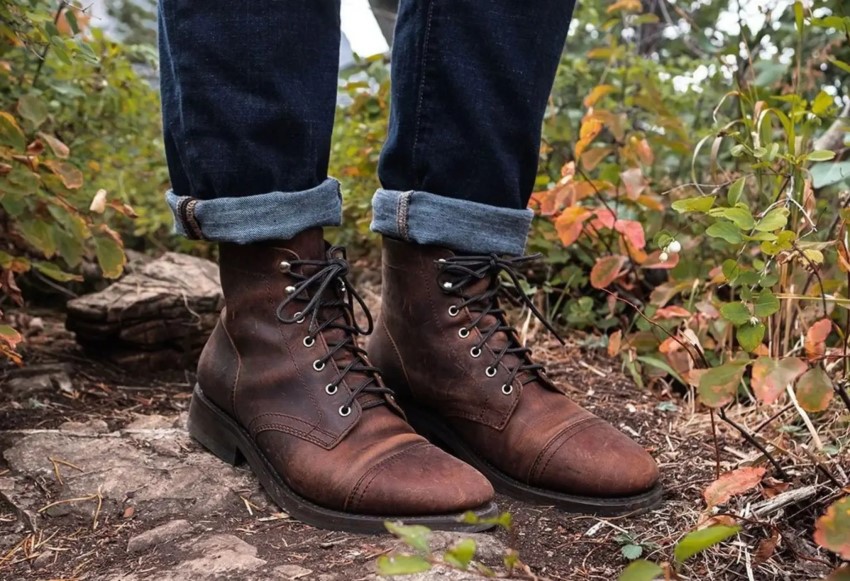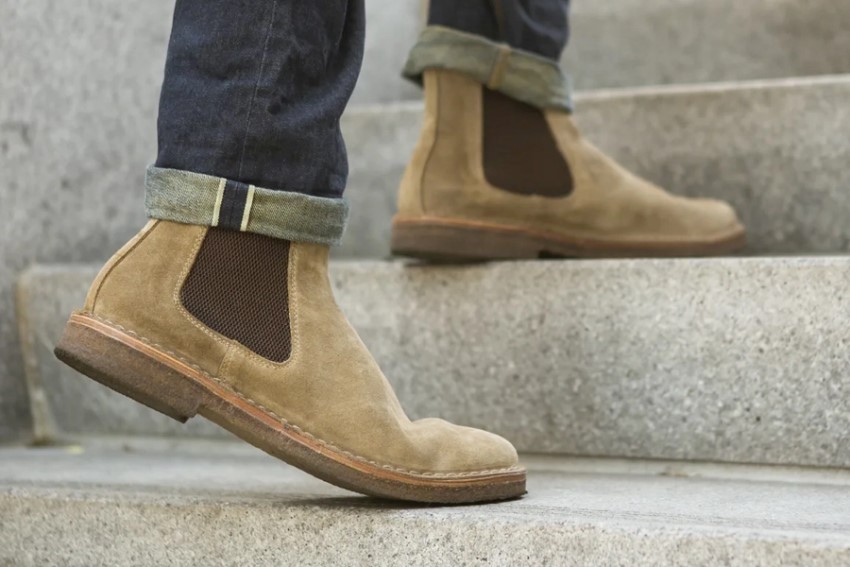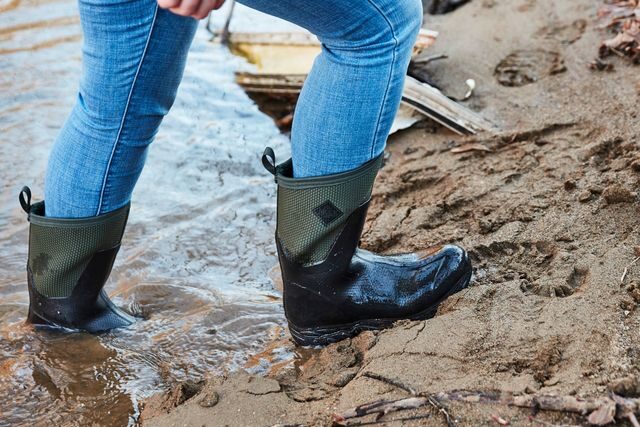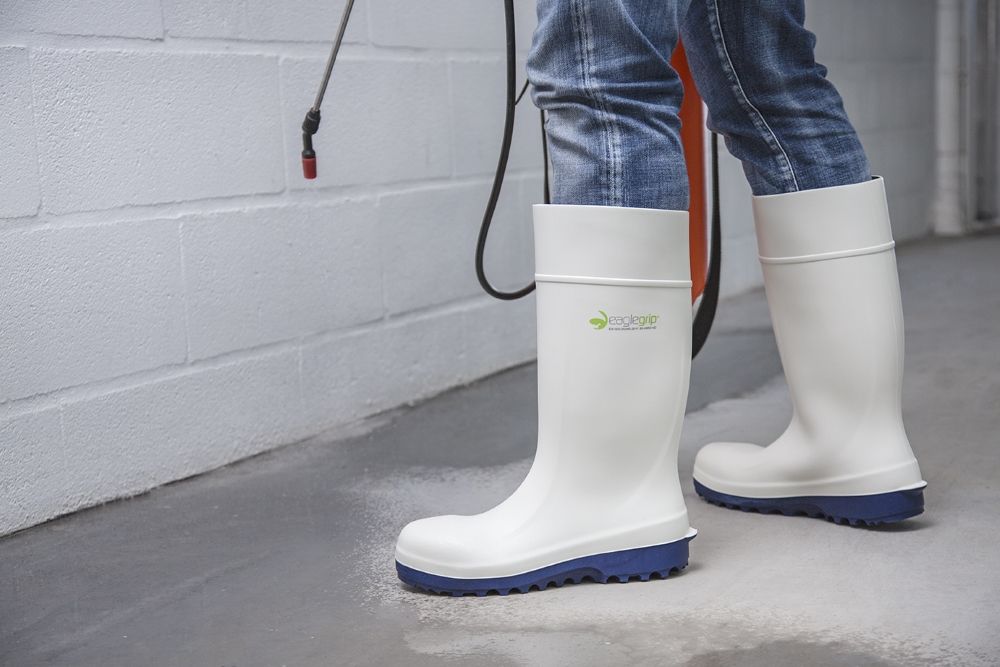What are the types of boots? This is a question that confuses many people because they often have difficult choices when it comes to buying a custom boot. The reason is also quite obvious that there are now countless types of boots from many styles, even categorizing them according to men and women.
So guardboots has prepared this guide to help you choose the right boot for your needs. Besides different styles, boots also come in different heights and materials. However, in this blog, we only cover What are the types of boots based on the material?
Numerous styles of boots are still made today from leather, which was likely the first material used to create boots. In contrast, a number of materials, including rubber and nylon, have been used to make boots over time. Along with these, rubber, rope, and cork are other possible materials for the base. Here is how to find out:
What are the types of boots based on the Material?
1. Leather Boots
Despite having a plastic sole and a variety of dyes and waxes applied to give them a leather-like appearance, synthetic leather boots look like genuine leather. This sort of leather has a glossy paint applied to it, which makes the surface of the leather shiny. Even though they might be in style, they are not likely to be strong or long-lasting. Although it looks fashionable, this synthetic leather has a high level of water resistance.

Genuine leather is a substance created exclusively from animal skin. Genuine leather shoes are unmatched in terms of durability. If real leather is properly cared for, it usually improves over time. In order to get its color, real leather doesn’t need dyes, resins, or waxes, and it is known to survive for many years. Although genuine leather boots are typically thicker and warmer than synthetic leather boots, insulated boots may still be necessary in the coldest climates.
In mild winter weather, a leather boot by itself can keep your feet warm, but it is unlikely to do so in bitterly cold weather. An insulated pair of leather boots with a waterproof construction is what you need for the coldest weather. While leather boots are not always waterproof, many of them are.
2. Suede Boots

The underside of an animal’s skin, which is softer and more pliable than the outside skin but less resilient, is used to make suede. They are the type of footwear you will wait all year to wear in the hottest weather because they are made of wonderfully soft fabric. But with the crisp, cool fall air, soft ankle boots, knee-high designs, and heels look even more enticing. This kind of leather is used to make many boots because of its beauty and toughness.
3. Nylon Boots
The woven fabric used to make nylon boots means they won’t last as long as leather boots. This implies that in cold or damp weather, your feet might not be toasty. Nylon boots will be waterproof if they aren’t treated, which means they might not be as pleasant for your feet as you’d like.

If you want a pair of boots with these characteristics, pick a pair made of nylon since it is a lightweight and breathable material. Additionally, nylon can be dyed a variety of colors and is quite strong. The comfort and breathability of nylon contribute to its popularity.
4. Rubber Boots
Rubber is a sturdy, chemically resistant substance that is waterproof. Furthermore, it has a firm and flexible quality. This indicates that it is the ideal material for waterproof footwear. Rubber boots are the best choice for muddy or slippery terrain, but like leather, they won’t offer much warmth when it’s chilly. Rubber boots with insulation are available, though, and they’re great for cold and wet weather.

Rubber is a versatile material that may be used to create both shoe soles and waterproof shoe uppers. Rubber is fantastic since you don’t have to worry as much about salt stains destroying your boots. Of course, you could also think about duck boots (also known as pac boots), which combine rubber and leather to make a boot that is both cozy and suitable for winter.
5. Polyurethane Boots
One type of high-strength synthetic material is polyurethane (PU). It has a high level of wear resistance and is light and low density. Polyurethane is the most popular material for work footwear due to its properties of thermal insulation and slip resistance.

Polyurethane has a variety of finishes and permits pad printing, brushing, and other processes. The sole can therefore be completely modified. It may be colored in a wide range of colors and is also quite adaptable.
The finest work boots for plantar fasciitis frequently have shock-absorbing midsoles, which are a crucial component. Depending on the density at which the polyurethane is created, it can be adapted to all styles of footwear and finishes.
6. Wool Boots

Wool is a silky fabric that is derived from wool. It fits winter boots perfectly because it is insulated and warm. Having said that, wool is typically used for lining boots but can also be utilized for shoe uppers. So that your feet stay warm even in the coldest situations, footwear becomes more winter-friendly. These wool boots are currently popular due to the range of designs and vibrant colors, which make them a lovely and necessary wintertime fashion piece.
How to care and maintain boots
If you want to use boots for a longer period of time, care and maintenance are especially important because they are frequently made of suede or soft leather.
Shaping the boots
If you have high boots, remember to keep the form in place by putting paper or cloth inside the shoes. This guarantees that the shoe’s texture won’t change while being worn. The paper will also assist in absorbing moisture from within your boots. They can avoid dampness, mold, and bad odors by doing this, especially during rainy weather.
Storing and cleaning boots
The best approach to keep boots in good condition is to store them on a shoe shelf when not in use by placing them in a plastic bag or cloth bag with some anti-mold tablets. Be careful not to put your shoes directly on the cement floor as the air humidity can easily cause your shoes to become wet and rapidly ruined. Boots should also be cleaned right away after usage, and wearing shoes in the rain should be avoided.
To keep soft leather shoes looking new and keep them from cracking, apply polish of the same color or polish. When cleaning dirt from suede materials, use a soft-bristled shoe brush and try to avoid scrubbing the leather in the other direction.
Wrapping up
Numerous individuals can be seen wearing boots on the street, in the military, and in areas where they are working in hazardous or toxic conditions for their feet. However, modern boots continue to be stylized with several designs that serve mostly the fashion sector.
You look remarkable when wearing a range of clothing and boots, which highlights your endearing attractiveness. You are a true fashionista if you understand how to maintain and care for boots.
So, if based on material, what are the types of boots? Surely our article has partly answered your question. We are not sure that we have covered all the different types of boots available in the market. We’ve only covered a few popular materials, hopefully this little information can be useful for you.
Learn more: 5 Best Work Boots for Men

